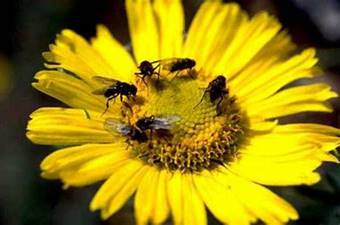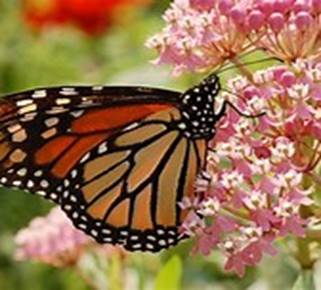Pollinators transfer pollen between flowers while visiting a plant for food, mates, shelter, and nest-building materials. Pollination is vital because it helps create a diverse plant population, which means: food and shelter for people and wildlife, fuel and biomass, a moderate temperature and oxygen. Canada has over 700 species of bees, which makes them the most common pollinator. Other pollinators include: moths, butterflies, hummingbirds, flies, and some beetles. Without pollinators, much of the food we eat would not be available. Helping the pollinators will also help our environment and economy. There are many ways to help out our small pollinator friends there are many tips and tricks for creating a pollinator-friendly garden. If you’d like to learn more, check out www.ontario.ca/page/pollinator-health

Choose native plants to attract native pollinators to your garden. Here’s a list of native Canadian plants that will help out our pollinator friends (be sure to also check what works best in your local area): For bees: aster, borage, chives, dahlia, foxglove, lavender, and goldenrod.
For butterflies: lilacs, bee balm, cosmos, zinnia, thistle, hollyhock, black-eyed Susan, bergamot, and milkweed.
For hummingbirds: try to grow red plants for the hummingbirds – they’re guided by their eyes and red-colored flowers are a great source of nectar. You can plant: red coral bells, red or purple hollyhock, sage, geranium, hibiscus, and petunias.
Help out the local pollinators by planting in clusters instead of only doing single plants. It will help them find their favorites and keep your gardens lush. You can create a pollinator-friendly garden by eliminating the use of pesticides. Keeping a tidy garden is a natural way of avoiding having pests – weeds near your plants can harbor unwanted pests, as well as overripe produce. If you harvest produce right when it ripens, you’ll be sure to have a healthier garden without the need for pesticides.
Try to fill your garden with plants that bloom at different times between spring and fall so that the pollinators have food and shelter throughout the different seasons. Keep in mind that flowers bred to be pleasing to the human eye can sometimes be sterile and unhelpful to pollinators. Planting heirloom seeds and native plants through the different seasons will help out our pollinator friends the most

Leave some mulch-free space in your garden for ground-nesting bees. These bees dig burrows in the ground and prefer dry soil bare of vegetation. Make sure to leave some spots in your garden exposed, so the bees can access the dry, undisturbed soil and begin building their nests.
Plant milkweed, monarch butterflies love it! Did you know monarchs can’t survive without milkweed plants? Their caterpillars only eat milkweed and it’s also where they lay their eggs. However, once a monarch has reached adulthood, it will drink the nectar of many plants. There are many species of milkweed, be sure to check which variety is native to your area

A great way to protecting our local pollinators is to make a bee bath. You can easily make a bee bath by filling a bowl with large rocks and shallow water.
